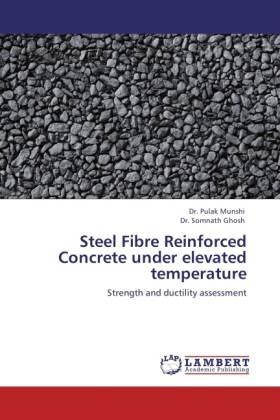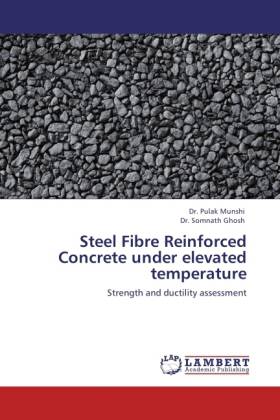
- Afhalen na 1 uur in een winkel met voorraad
- Gratis thuislevering in België vanaf € 30
- Ruim aanbod met 7 miljoen producten
- Afhalen na 1 uur in een winkel met voorraad
- Gratis thuislevering in België vanaf € 30
- Ruim aanbod met 7 miljoen producten
Zoeken
Steel Fibre Reinforced Concrete Under Elevated Temperature
Strength and ductility assessment
Somnath Ghosh, Pulak Munshi
Paperback | Engels
€ 77,95
+ 155 punten
Omschrijving
The use of fibres of different materials (metallic and non-metallic) with any weak matrices, to enhance the overall performance of structural members, has become extremely popular. Fibre reinforced concrete is one of these kinds of composites. Any reinforced cement concrete structure, which is exposed to elevated temperature, looses its overall strength. It has been observed from several investigations that the addition of steel fibre in concrete improves the tensile strength, ductility and toughness compared to plain concrete. It has also been observed that the reduction in strength of fibre reinforced concrete is much less compared to that of plain concrete, when exposed to elevated temperature. Again, it is known that the increase in conventional steel reinforcement in RCC structure leads to decrease in ductility. Thus, an optimal use of steel fibre and conventional steel reinforcement in concrete will lead to most rational design from the consideration of strength and ductility.
Specificaties
Betrokkenen
- Auteur(s):
- Uitgeverij:
Inhoud
- Aantal bladzijden:
- 204
- Taal:
- Engels
Eigenschappen
- Productcode (EAN):
- 9783845415895
- Verschijningsdatum:
- 25/07/2012
- Uitvoering:
- Paperback
- Formaat:
- Trade paperback (VS)
- Afmetingen:
- 152 mm x 229 mm
- Gewicht:
- 303 g

Alleen bij Standaard Boekhandel
+ 155 punten op je klantenkaart van Standaard Boekhandel
Beoordelingen
We publiceren alleen reviews die voldoen aan de voorwaarden voor reviews. Bekijk onze voorwaarden voor reviews.











